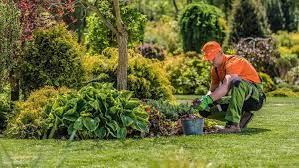The Art and Science of Gardening: Exploring the World of Gardeners
Gardeners are a unique breed of individuals who possess a deep passion for cultivating plants, flowers, fruits, and vegetables. They are artists, scientists, and caretakers all rolled into one, dedicated to creating beautiful and bountiful outdoor spaces.
One of the defining characteristics of gardeners is their connection to the earth. They understand the importance of soil health, water conservation, and biodiversity in creating thriving gardens. Through their hands-on work in the garden, they develop a profound respect for nature’s cycles and rhythms.
But gardening is not just about digging in the dirt; it also requires creativity and vision. Gardeners carefully plan and design their outdoor spaces, considering factors such as sunlight exposure, soil composition, and plant compatibility. They use their artistic sensibilities to create harmonious arrangements of colors, textures, and shapes that delight the senses.
Furthermore, gardeners are lifelong learners. They continuously seek out new knowledge about plant care techniques, pest management strategies, and sustainable gardening practices. Whether through books, workshops, or online resources, they are always looking to expand their horticultural expertise.
Perhaps most importantly, gardeners are generous souls who love to share their passion with others. They open their gardens to visitors, swap seeds with fellow enthusiasts, and offer advice to beginners seeking guidance. Through these acts of kindness and community building, they help cultivate a sense of connection and belonging among fellow garden lovers.
In conclusion, gardeners play a vital role in our world by beautifying our surroundings, promoting environmental stewardship, and fostering a sense of community. Their dedication to nurturing plants and cultivating relationships makes them true stewards of the earth.
5 Essential Tips for Thriving Gardens
- Choose the right plants for your garden based on the local climate and soil conditions.
- Regularly water and fertilize your plants to ensure healthy growth.
- Prune and trim your plants to promote optimal growth and flowering.
- Keep an eye out for pests and diseases, and take prompt action to protect your garden.
- Take time to enjoy your garden and appreciate the beauty of nature around you.
Choose the right plants for your garden based on the local climate and soil conditions.
Selecting the appropriate plants for your garden according to the specific characteristics of your local climate and soil conditions is essential for creating a thriving and sustainable outdoor space. By choosing plants that are well-suited to the unique environmental factors of your region, such as temperature, rainfall, sunlight exposure, and soil type, you can ensure their health and longevity. This thoughtful selection process not only enhances the beauty of your garden but also reduces the need for excessive maintenance and resources, promoting a more harmonious relationship between your plants and their natural surroundings.
Regularly water and fertilize your plants to ensure healthy growth.
Regularly watering and fertilizing your plants is essential to promote healthy growth and vibrant blooms. Water provides plants with the hydration they need to thrive, while fertilizers supply them with essential nutrients for strong roots and lush foliage. By maintaining a consistent watering and fertilizing schedule, gardeners can ensure that their plants receive the care they need to flourish and reach their full potential. Remember, a well-nourished plant is a happy plant!
Prune and trim your plants to promote optimal growth and flowering.
Pruning and trimming your plants is a crucial practice that helps promote optimal growth and flowering. By selectively removing dead or overgrown branches, you allow the plant to redirect its energy towards producing new growth and vibrant blooms. Trimming also helps maintain the plant’s shape and structure, ensuring better air circulation and light penetration. With regular pruning, you not only enhance the overall health of your plants but also encourage them to flourish abundantly, creating a visually appealing and thriving garden space.
Keep an eye out for pests and diseases, and take prompt action to protect your garden.
To maintain a healthy and thriving garden, it is crucial for gardeners to stay vigilant and proactive in monitoring for pests and diseases. By regularly inspecting plants for any signs of infestation or illness, gardeners can identify issues early on and take swift action to protect their garden from potential damage. Implementing integrated pest management strategies, practicing good sanitation practices, and using organic pest control methods can help gardeners effectively manage pests and diseases while minimizing the need for harmful chemicals. Remember, a watchful eye and timely intervention are key to safeguarding the well-being of your garden plants.
Take time to enjoy your garden and appreciate the beauty of nature around you.
Taking time to enjoy your garden and appreciate the beauty of nature around you is a simple yet profound tip for gardeners. Amidst the hustle and bustle of tending to plants, weeding, and watering, it’s essential to pause, breathe in the fragrant blooms, listen to the gentle rustle of leaves, and marvel at the intricate patterns of nature. By immersing yourself in the tranquility of your garden, you not only recharge your own spirit but also deepen your connection to the natural world, finding inspiration and solace in its ever-changing beauty.

